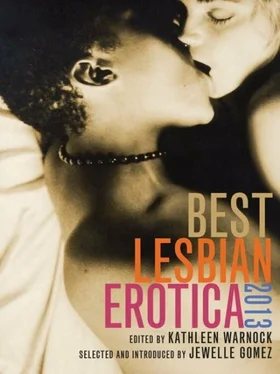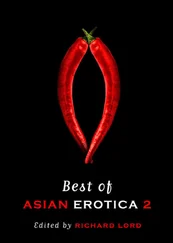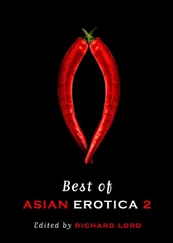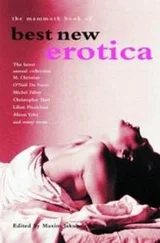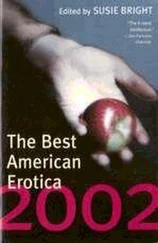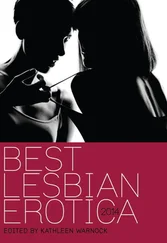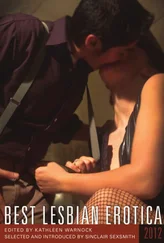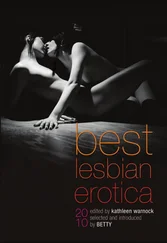BEST LESBIAN EROTICA 2013
Edited by Kathleen Warnock
Santayana said, “Those who cannot remember the past are condemned to repeat it.” I would like to add that those who do remember it will come up with a great guest judge for Best Lesbian Erotica .
Among her many smart decisions, Tristan Taormino, the founder of this series, asked Jewelle Gomez to edit the 1997 volume. It was the second year of Best Lesbian Erotica , and getting Jewelle to select the stories was a major step in the growth and visibility of the book and the genre. This year, when we were discussing possible guest judges, I asked the folks at Cleis: “Could we do repeats?”
I’d had a chance to meet and work with Jewelle earlier in the year, when TOSOS (the LGBT theater company in New York, of which I am a proud member) produced a staged reading of her new play, Waiting for Giovanni . It’s a beautiful and challenging piece about James Baldwin, one of our great American writers, by an artist whose own voice is more powerful than ever. So we asked Jewelle to select this year’s stories and were thrilled when she said yes.
In the fifteen years since Jewelle last worked with Best Lesbian Erotica , the genre has become a mighty one, evolving into a full-voiced maturity, with a loyal audience, and writers whose work stands with the best in any genre. I was proud to pass the finalists on, and wondered which she’d choose: which writers would have their first story published, which of the emerging ones would keep blossoming, which grown artists would thrill us with a masterful tale.
One of the most important things we do as artists, one of our obligations, is to make it possible for others to tell their stories. So each spring when I begin to sort through hundreds of stories, I look and listen hard for the ones that are most necessary. What we do: naming and owning our desires, our loves, our fears, our deepest secrets, is essential. Saying, “No, I am HERE, this is who I am,” is crucial to living when scared, angry people try to erase us, deny us, legislate us out of existence, make us second-class citizens, third-class… nothing.
In Jewelle’s beautiful play about James Baldwin, the artist is pressured not to publish Giovanni’s Room : a book about two men, white men, who love each other. His editor begs him to consider another topic; many of his fellow African American writers think he should be writing about their struggle to achieve equality. And finally, Baldwin picks up his papers from the floor and says:
…Still, I can do no more than bind my own wounds and remind them that not accepting love is where the end begins. Each book is my way of wringing life from death. And this story is one I… need… to tell and he is the one I wish to tell it. Unknown. Loving with the certainty of the tides.
And my life, my needs, my questions are my own to be examined by me… read by many. But judgment? In the beginning was the word… words made from the breath of life. It is the same breath whether we are singing a praise song or taking in the scent of our beloved who lies naked beside us. No matter how fierce my need may be; no matter how loud the sound of those who turn away—I am always me… inside here , looking out. Bearing witness. Preaching the word.
Kathleen Warnock New York City
INTRODUCTION: ON OUR BACKS
Jewelle Gomez
Back in 1984, when I was asked to submit an erotic story to the magazine On Our Backs , I’d never written one before. Of course, I had fantasies like most people (I was, after all, raised Catholic!); but as for writing them down—it never occurred to me. As a lesbian feminist of color I wasn’t against erotic literature; I just wasn’t sure how one constructed a juicy story that wasn’t based on exploitation. But I was already formulating the ideas for my vampire novel, a story told through a feminist lens, so I had begun thinking about how to tackle a traditionally exploitative genre without traveling down the easy road of tradition. So I figured I might as well give erotica a go, too. The challenge of finding the “sweet spot” while creating engaging, multidimensional women who are not taking advantage of each other (unless that was mutual) was a challenge I enjoyed.
The other part of wanting to write the story was a response to a call to action by the Feminist Anti-Censorship Taskforce (FACT) which, in the 1980s, was providing a sex-positive political alternative to the very loud voices of conservative, antiporn activists. Women’s relationship to sexuality was and remains a complex territory. No matter how hip and powerful we feel, women have been and continue to be seen as the sexual receptacles for men. Male-produced images in popular culture still define us so narrowly it would be impossible for an extraterrestrial being landing on earth to actually recognize a female unless the being had landed in the offices of a fashion magazine where the women are dress-size 0, wear six-inch heels, and all look white, even when they have brown skin. Female images in popular media are crafted to pique the desire of middle-aged white men. And any women that seem to deviate from that are quickly slapped down—see “journalists’” comments about Kate Winslet or Kelly Clarkson being “fat.” Notice how few African American women with dark skin or Asian American women appear on magazine covers or on television series. This affects how we treat ourselves and our desire.
Mainstream pornography simply follows mainstream commercial images to their logical conclusion: women are not people… we’re soylent green . That is—like the eponymous movie—we are a packaged edible, human commodity to be used, abused and discarded at the whim of male consumers. The famous picture that antiporn activists used most often was that of a porn magazine cover in which women were being fed into a meat grinder, legs and high heels the only remaining indication that we were humans. There is no question that these images cause damage. But I’d venture to say that numerically speaking, many more people have their ideas about women shaped by going to auto shows; watching the Kardashians, the Dallas Cowboy Cheerleaders and children’s beauty pageants; all of the above being alarming cases where women contribute to their own objectification or that of their children, usually without a thought about the pornographic quality of their acts. All of it supports the idea that women are disposable and interchangeable items as easily killed off as changing the tires on your truck.
That said, it is just as dangerous for women to tamp down our sexuality in response to exploitation, and that is what conservative lesbian feminists of the ’80s were insisting on. Should we don the not-so-gay apparel of the cloister? Never enjoy our fantasies? Never experience orgasm because it frightens the horses? When President Ronald Reagan sent Attorney General Edwin Meese on a fact-finding mission, Meese traveled the country, holding meetings, trying to convince local municipalities to shut down “porn” operations. The commission engaged “experts” who emphatically declared that if we didn’t fight this scourge we were Nazis.
A group of us—mostly lesbian—activists went to a courthouse hearing of the commission in New York City, smuggling in signs that said CENSORED and we whipped them out at one point, and sat quietly so it would look really bad if they tried to drag us away. The resulting Commission report didn’t tell us anything we didn’t already know, and told us a lot that was totally untrue. The result of the Commission, its report and the so called “porn wars” was not a lessening in the profits of porn magazines or increase in the recognition of responsible human beings, but rather the clamping down on and sometimes ban of gay and lesbian literature (erotic and not) crossing borders.
Читать дальше
